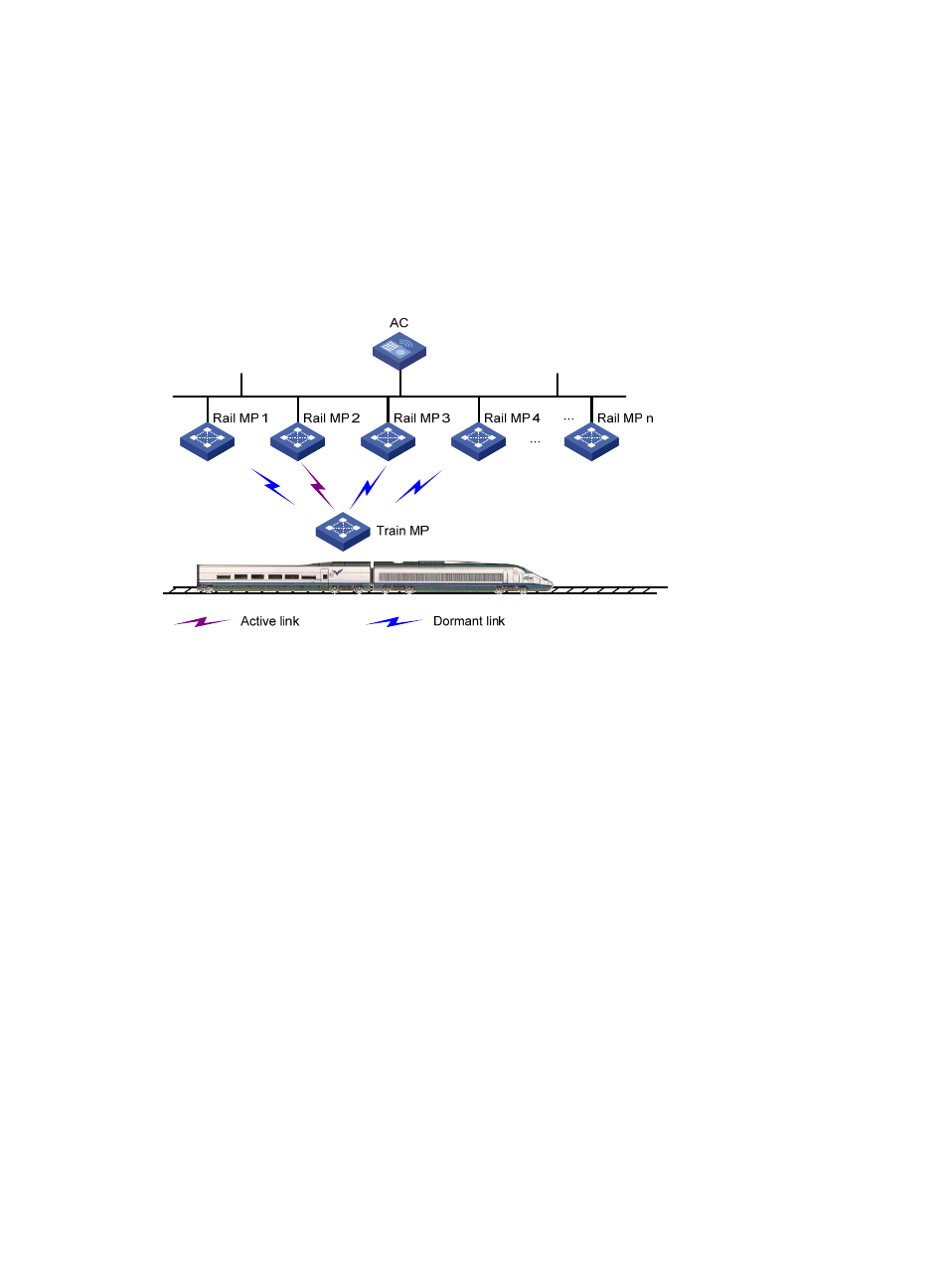Mobile link switch protocol, Terminology of mlsp, Mlsp advantages – H3C Technologies H3C WX3000E Series Wireless Switches User Manual
Page 185: Operation of mlsp

173
Mobile link switch protocol
At any given time, an active link should be available between a rail MP and a train MP for data
communication. MLSP was developed to create and break links during train movement.
Terminology of MLSP
As shown in
, when the train is moving, it needs to break the existing active link with rail MP 2
and create a new active link with another rail MP.
Figure 90 Diagram for MLSP
•
Active Link—Logical link through which all data communication from/to a train MP happens.
•
Dormant Link—Logical link over which no data transfer happens, but it satisfies all the criteria for
becoming an active link.
•
Proxy device—A device such as a server that is connected to a train MP for receiving traffic.
MLSP advantages
1.
MLSP makes sure that the link switch time is less than 30 ms.
2.
MLSP works well even if the chipset gets saturated at high power level.
3.
MLSP achieves zero packet loss during link switch.
Operation of MLSP
MLSP establishes multiple links at any given time between a train MP and multiple rail MPs to provide link
redundancy, ensuring high performance and good robustness for the network.
The following four parameters are considered by MLSP for link switch. Based on the deployment, all these
parameters are tunable to achieve best results.
•
Link formation RSSI/link hold RSSI—This is the minimum RSSI to allow a link to be formed and held.
Therefore, the minimum RSSI must be ensured at any given point in the tunnel. Otherwise, the error
rate can be very high.
•
Link switch margin—If the RSSI of the new link is greater than that of the current active link by the
link switch margin, active link switch will happen. This mechanism is used to avoid frequent link
switch.